Discovering Al-Hamideyah Jasmine Garden in Dubai
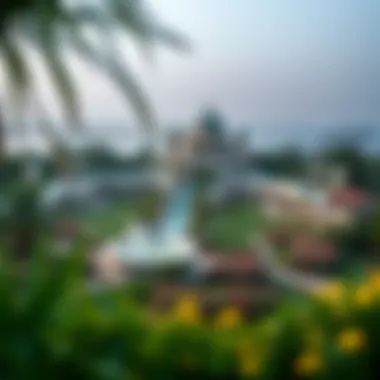
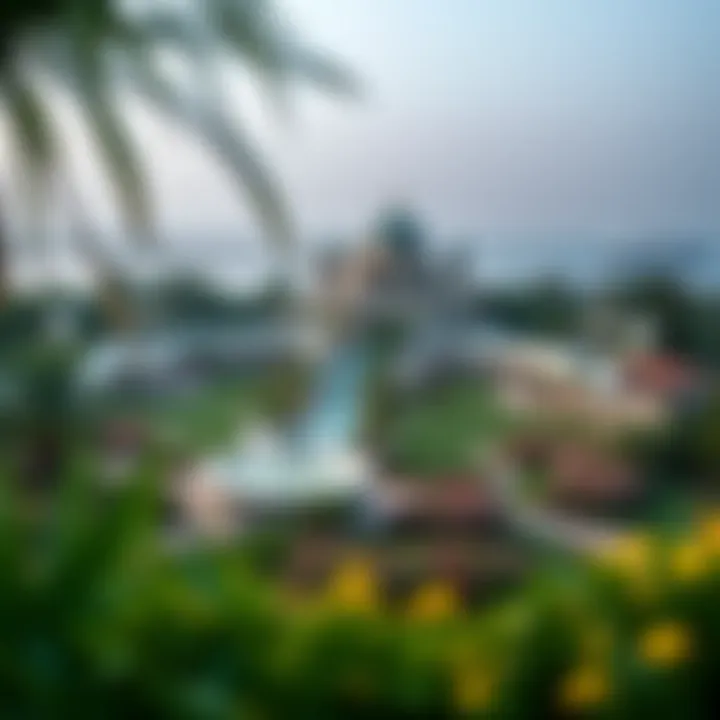
Intro
When it comes to urban landscapes, few places manage to blend nature with human activity as effectively as Al-Hamideyah Jasmine Garden in Dubai. This verdant spot, often overshadowed by the towering skyscrapers and bustling streets, serves as a refreshing retreat for both residents and visitors. Imagine stepping away from the clamor of city life into a realm where the air carries the delicate scent of jasmine, the sun filters through lush greenery, and the sounds of nature provide a serene backdrop.
Al-Hamideyah Jasmine Garden is not just a collection of plants; it embodies a commitment to enhancing local biodiversity while offering community spaces for recreation and relaxation. The garden's layout is thoughtfully designed, reflecting both aesthetic appeal and ecological awareness. As one meanders through its pathways, it's difficult not to appreciate how this garden enhances the urban fabric of Dubai, becoming an essential part of its green infrastructure.
In the following sections, we will explore the garden's historical roots, the diversity of its botanical offerings, and the myriad activities it provides for the community. This exploration reveals more than just a garden; it highlights a necessary balance between urban development and natural preservation.
Historical Context of Al-Hamideyah Jasmine Garden
Al-Hamideyah Jasmine Garden is not just a patch of greenery amidst the concrete of urban Dubai; it represents the city’s evolving relationship with nature, history, and culture. Understanding the historical context of the garden is crucial as it offers insight into tropical horticulture and cultural integration. This garden serves as a mirror reflecting the development of the region while fostering community engagement and enhancing biodiversity.
Origins and Development
The inception of Al-Hamideyah Jasmine Garden can be traced back to the early conversations about urban greening in Dubai. Initiatives focused on creating green spaces have emerged as the city’s population expanded and urbanization took hold. Conceived in the 1980s, the garden was part of a broader vision to provide residents with open spaces that promote relaxation, health, and community cohesion.
The development phase was not without its challenges. Factors like soil conditions and local climate had to be considered to cultivate a rich flora that could thrive in this arid environment. With the help of skilled horticulturists, the garden blossomed into what it is today, with its design intricately reflecting traditional Islamic patterns combined with modern sustainable practices.
The layout of Al-Hamideyah Jasmine Garden reveals a thoughtful consideration of both aesthetics and functionality. Visitors often find themselves wandering through pathways shaded by lush greenery, surrounded by vibrant flowers that create a multisensory experience. Each plant was selected not only for its visual appeal but also for its ability to adapt to local conditions, thus ensuring a sustainable ecosystem.
Cultural Significance
The garden is steeped in cultural importance, acting as a sanctuary amidst bustling city life. While it provides a place for people to unwind, it also serves as a hub for cultural festivities and community gatherings. Events held here, such as local art exhibitions or traditional music performances, foster a stronger connection among residents, making it more than just a garden – it’s a communal living room.
Additionally, the garden plays a vital role in instilling a sense of pride among Emiratis and expatriates alike. It stands as a testament to Dubai’s commitment to preserving its natural heritage while embracing modernization. The presence of native plants alongside exotic species creates an educational platform, raising awareness about biodiversity and environmental stewardship.
"Gardens are a form of autobiography; they tell us who we are, who we were, and who we can be."
For more insights on the importance of urban green spaces, consider visiting resources like Wikipedia or Britannica.
This garden is more than a collection of plants; it represents a living dialogue between Dubai’s past and its aspirations for a greener, more sustainable future.
Architectural and Design Elements
The architectural and design elements of Al-Hamideyah Jasmine Garden play a pivotal role in shaping not just its aesthetic appeal but also its functional value as a community space. These elements serve to enhance the overall atmosphere of the garden and contribute directly to its mission of promoting sustainability and biodiversity. A well-considered landscape can provide myriad benefits—ranging from improving local ecology to bolstering community well-being.
Layout and Spatial Design
At first glance, the layout of Al-Hamideyah Jasmine Garden appears like a carefully orchestrated symphony of spaces that cater to a variety of activities and experiences. Designed with the visitor's journey in mind, pathways meander through different sections, inviting exploration. You can find the garden divided into thematic areas, each with its unique characteristics and functionalities.
The spatial design fosters a balance between openness and intimacy. For instance, wide open lawns are interspersed with shaded nooks, promoting gatherings or solitary contemplation. Benches and resting spots are thoughtfully placed along the trails, ensuring visitors can pause and absorb the tranquility that surrounds them. The pathways, made of natural stone and adorned with indigenous plants, connect various sections, guiding the eye across vast vistas of greenery.
Landscape Features
The landscape features of Al-Hamideyah Jasmine Garden are carefully curated, demonstrating a blend of natural beauty and functionality. This garden incorporates various elements such as flowerbeds, water features, and green walls.
- Water Features: Small ponds and fountains not only add to the visual appeal but also create habitats for local wildlife and promote local biodiversity.
- Floral Arrangements: A diverse range of flowers, especially jasmine, is spread throughout, not only accentuating the garden's fragrance but embodying its name.
- Green Walls: Vertical gardens are integrated into the design, promoting air quality and providing a unique charm to the overall structure.
These elements transcend mere decoration. They communicate ecological awareness and accentuate the garden’s identity as a serene sanctuary amid the rush of urban life.
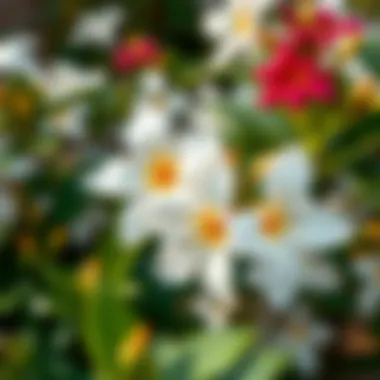
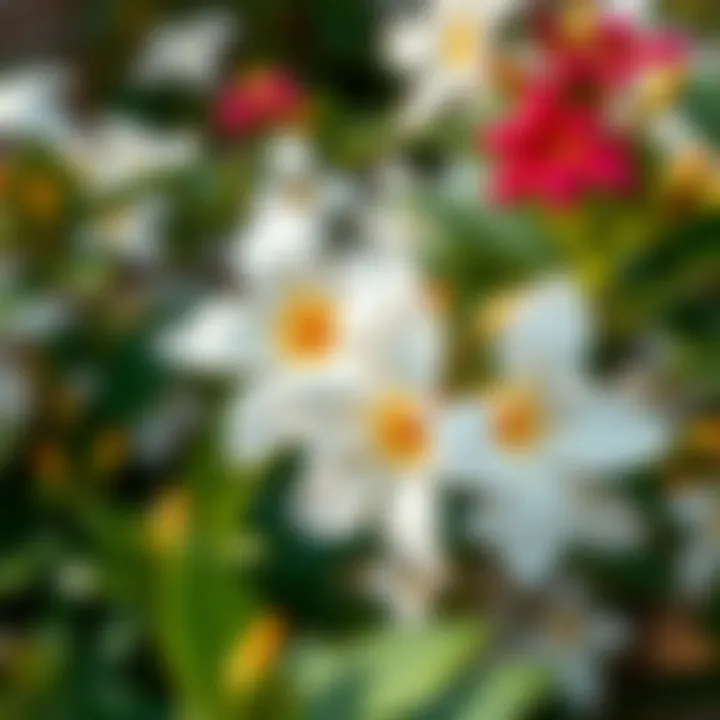
Sustainable Practices in Design
Sustainability is woven into the very fabric of Al-Hamideyah Jasmine Garden. From its conception, this oasis has aimed to embrace practices that lessen environmental impact while enhancing its biodiversity. The design strategically incorporates several sustainable features, which can be categorized as follows:
- Native Plant Selection: Predominantly utilizing native flora ensures that water and nutrients are conserved, making maintenance simpler and more sustainable.
- Rainwater Harvesting: Systems are in place to collect and utilize rainwater, minimizing the need for additional irrigation.
- Organic Maintenance Practices: Chemicals are avoided in favor of natural alternatives, promoting both soil health and a safer environment for humans and wildlife alike.
In every nook and cranny, the innovative practices adopted in design serve as a blueprint for urban gardens seeking sustainability amid the concrete jungle.
The intertwining of innovative design with sustainable practices not only enhances the aesthetic experience but also fosters community responsibility towards ecological stewardship.
Through architectural mindfulness, Al-Hamideyah Jasmine Garden stands as a testament to the role thoughtful design can play in enhancing urban sustainability, engaging the community, and supporting the biodiversity that exists within its embrace.
Biodiversity within the Garden
Biodiversity in Al-Hamideyah Jasmine Garden plays a pivotal role in creating a balanced ecosystem, enhancing the beauty and vitality of this urban oasis. By cultivating a rich variety of plant life and promoting wildlife habitats, the garden serves both aesthetic and ecological purposes. Recognizing the significance of biodiversity not only enhances the landscape but also aids in environmental sustainability.
Native Plant Species
The selection of native plant species is crucial to the success of the garden. These plants are well-adapted to local climatic and soil conditions, requiring less water and maintenance compared to non-native varieties. Examples include the Date Palm, Ziziphus spina-christi (Christ's thorn), and Acacia species. Integrating these species into the landscape not only supports local flora and fauna but also preserves traditional gardening practices that have been part of the region’s heritage for centuries.
The benefits of focusing on native species extend beyond just aesthetics. They serve as essential food sources for pollinators and other wildlife. For instance, the blossoms from these plants attract bees and butterflies, which in turn assist in the pollination process critical for plant reproduction.
Wildlife Habitat Potential
Al-Hamideyah Jasmine Garden offers ample opportunities for wildlife habitat creation, adding another layer of value to this green space. The various native plant species act as shelters and breeding grounds for birds, insects, and small mammals. Moreover, the presence of small water features and diverse planting arrangements invites a myriad of species to call the garden home.
By fostering diverse habitats, the garden not only enhances its ecological role but also provides educational opportunities for visitors. Engaging with nature encourages a greater appreciation for local wildlife and environmental conservation efforts. The garden acts as a living classroom, showcasing how urban spaces can be harmoniously integrated with natural ecosystems.
"Biodiversity isn't just a nice to have; it's a critical component of our urban ecosystems, ensuring resilience and sustainability in our cityscapes."
By addressing these aspects of biodiversity, Al-Hamideyah Jasmine Garden stands out as a testament to how urban development can coexist with nature, underscoring the significance of green spaces in enhancing the overall quality of life for residents and visitors alike.
Community and Educational Initiatives
The significance of community and educational initiatives at Al-Hamideyah Jasmine Garden cannot be overstated. In a rapidly urbanizing city like Dubai, the garden stands as a sanctuary fostering community spirit while also serving as an open-air classroom. Programs designed for local residents not only enrich their understanding of nature but also help cultivate a sense of belonging among visitors. Such initiatives ensure that the garden is not merely a space for leisure, but a nexus of learning and social engagement.
Workshops and Educational Programs
Workshops at Al-Hamideyah Jasmine Garden are more than just events; they are gateways to deeper awareness and appreciation of local flora and sustainable practices. For instance, regular sessions on gardening techniques empower residents with the skills needed to create their own green spaces at home. Participants learn about xeriscaping, a water-efficient approach to landscape design that is incredibly useful given Dubai's arid climate.
Moreover, educational programs aimed at schools emphasize environmental stewardship. Field trips allow students to observe, interact, and engage with the garden's diverse ecosystem. This hands-on experience often sparks a lasting interest in the environment among children, turning them into future advocates for conservation.
The impact of these workshops can be seen in several ways:
- Skill Development: Residents learn practical gardening skills.
- Environmental Awareness: Increased understanding of local ecosystems fosters sustainable practices.
- Community Bonding: Workshops often encourage friendships and a network of like-minded individuals.
Community Engagement Activities
Community engagement activities at the garden play a vital role in building connections and stimulating both social interaction and well-being. Events such as 'Garden Days' invite families and individuals to participate in planting sessions, where they contribute directly to the upkeep and beauty of their surroundings. These activities often involve educational components, such as talks by horticulturists and environmentalists, sharing insights on the significance of each species planted.
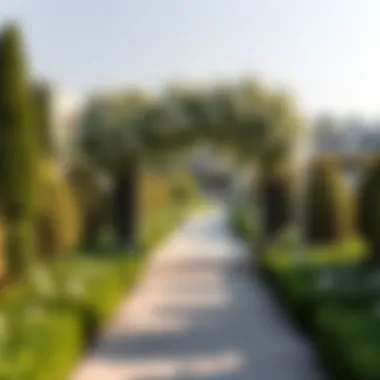
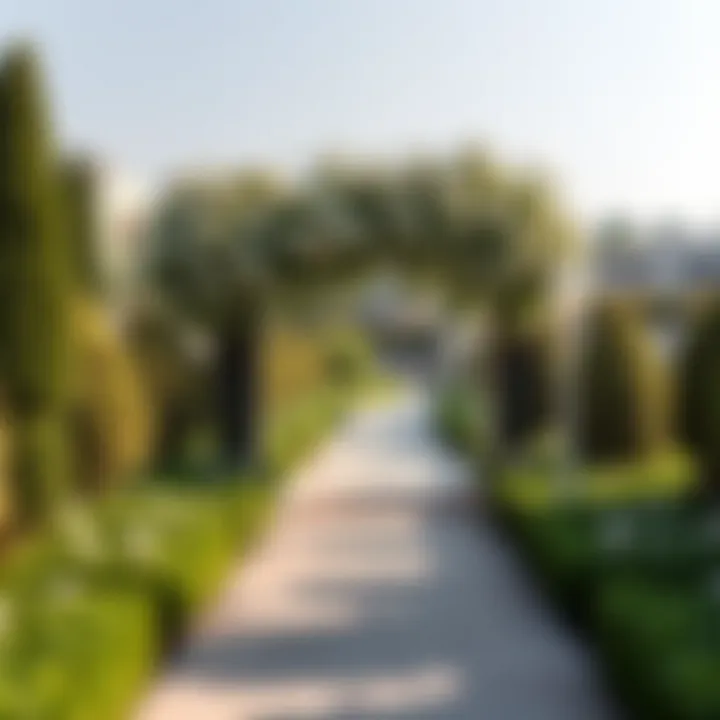
In addition, seasonal festivals celebrate local culture and heritage, all while underscoring the importance of biodiversity. Through these festivities, residents not only enjoy a wealth of activities such as art displays and musical performances but also establish a bond with the natural environment.
"Creating connections between people and nature is just as important as creating connections among people themselves."
The array of community engagement activities contributes to a sense of ownership over the garden, leading to:
- Social Cohesion: Brings people together, fosters relationships and networks.
- Cultural Expression: Allows local art and culture to flourish in a natural setting.
- Sustainability Efforts: Encourages ongoing volunteerism and an active role in preservation efforts.
In sum, the community and educational initiatives at Al-Hamideyah Jasmine Garden exemplify how urban green spaces can evolve into vibrant community hubs. They present numerous benefits, enhancing not just individual knowledge but also weaving a stronger social fabric within the fabric of Dubai.
Recreational Activities Offered
Recreational activities play a pivotal role in making Al-Hamideyah Jasmine Garden a vibrant spot for both residents and tourists in Dubai. This garden is not just a patch of greenery; it serves as a refuge from the harsh urban landscape that surrounds it. The activities offered here are designed to enhance the quality of life, encourage physical activity, and foster community engagement. In a city that often feels overly fast-paced, the recreational aspects of the garden provide a necessary antidote.
Walking and Running Trails
One of the standout features of the garden is its carefully designed walking and running trails. Spanning several kilometers, these paths wind through the lush landscaping, allowing people to immerse themselves in nature while getting some fresh air. The trails cater to different fitness levels, making them accessible for casual strollers as well as avid joggers.
Moreover, these trails promote a sense of community by encouraging groups of friends, families, or even solo adventurers to gather and engage in physical activities. It’s quite common to see people using the paths for morning walks, afternoon jogs, or even leisurely strolls during the evening. Paths are often lined with informative signs about the native plants and wildlife, providing an educational twist to a simple run or walk.
"Being in the garden not only boosts your physical health, but it also rejuvenates your spirit. It’s like a mini-vacation from daily life."
Family-Friendly Spaces
Another crucial aspect of recreational activities in Al-Hamideyah Jasmine Garden is its family-friendly spaces. These areas are designed with the comfort and enjoyment of families in mind. Playgrounds equipped with safe, modern equipment allow children of all ages to engage in active play while parents can relax on nearby benches, keeping an eye out with ease.
In addition, picnic areas scattered throughout the garden encourage families to spend quality time together. Parents can pack a lunch, and set up on the grass, enjoying a meal surrounded by blooming flowers and the chirping of birds. The relaxed atmosphere allows children to roam and play freely, making it a popular spot for weekend outings.
The careful planning of these spaces indicates an understanding of the community’s needs—providing safe, welcoming places for families strengthens social ties and enriches community life.
Both the walking/running trails and family spaces highlight the garden's potential for fostering a stronger community. By combining physical activity with interaction, visitors are not only benefiting their health but also creating relationships that enhance their everyday lives. Al-Hamideyah Jasmine Garden stands as a testament to how recreational spaces can harmonize wellbeing and community spirit in an urban environment.
Al-Hamideyah Jasmine Garden's Role in Urban Sustainability
The Al-Hamideyah Jasmine Garden serves as a significant touchstone for understanding urban sustainability in Dubai. In a city often perceived as a concrete jungle, this garden offers a breath of fresh air, both literally and metaphorically. It stands as a testament to Dubai's efforts in promoting green spaces while fostering a sustainable environment that benefits both the community and the broader ecosystem.
Green Infrastructure Contributions
Green infrastructure is about integrating nature into our urban landscapes. Al-Hamideyah Jasmine Garden exemplifies this concept through its various components that work together to enhance environmental health. The garden features systems designed to manage rainfall and alleviate flood risks, allowing water to infiltrate the soil rather than flow away. For instance, the layout incorporates permeable pathways and strategically placed water channels, designed to minimize runoff and promote groundwater recharge.
- Stormwater Management: The garden’s design incorporates natural features to effectively manage stormwater. This not only reduces the chances of urban flooding but also allows rainwater to nourish the plants.
- Urban Heat Mitigation: By strategically planting trees and shrubs, the garden combats the urban heat island effect. It helps lower ambient temperatures, contributing to a cooler microclimate that promotes public comfort.
This integration of nature doesn't just beautify the urban landscape; it actively contributes to biodiversity by providing a habitat for various species of birds and insects, further enriching Dubai's ecological tapestry.
Climate Resilience Features
The importance of climate resilience in urban planning cannot be overstated. As the climate crisis looms larger, Al-Hamideyah Jasmine Garden offers several features aimed at enhancing the ability of the urban area to withstand climate-related stresses. The design takes into account extreme heat events, which are becoming more common in the region.
- Diverse Plant Selection: By relying on a diverse selection of drought-resistant native plants, the garden mitigates water dependency while maintaining an aesthetically pleasing landscape. These plants are naturally adapted to the local climate, ensuring survival even under extreme conditions.
- Educational Initiatives: Along with physical features, the garden promotes public awareness of climate issues through workshops and community programs. These initiatives engage residents in discussions about sustainability, fostering a culture of environmental stewardship.


"In times of climate uncertainty, spaces like Al-Hamideyah Jasmine Garden serve not just as recreational areas, but as critical components of our urban ecosystem, reinforcing the dialogue between nature and city living."
With these elements, Al-Hamideyah Jasmine Garden not only addresses immediate urban challenges but also sets the stage for a sustainable future in urban environments. Its blend of ecological benefits and community engagement makes it a vital part of Dubai's green infrastructure, demonstrating the interdependence between urban spaces and natural ecosystems.
Visitor Experience and Accessibility
Visitor experience and accessibility are crucial facets when exploring Al-Hamideyah Jasmine Garden. This garden isn't just a picturesque locale; it's a thoughtfully designed space that caters to people from all walks of life. Ensuring visitors feel welcomed and included contributes significantly to their overall enjoyment and connection with the garden's natural beauty. Accessibility, in particular, translates to inviting more individuals, ensuring they can easily enjoy the myriad features the garden has on offer.
The integration of thoughtful transport links and easily navigable access points makes reaching the garden a breeze. It's apparent that this is not just a green patch in the urban sprawl; it is an inclusive environment that beckons city dwellers and tourists alike. In today’s world, where commutes can be the worst part of an outing, the convenience of access stands out.
Transport Links and Access Points
Al-Hamideyah Jasmine Garden sits beautifully within the network of transport links in Dubai, making it a geographically strategic location for both locals and incoming visitors. If you’re taking a metro journey, the nearest station isn't far-off, around a bus ride or a quick taxi that can get you there promptly. Public buses also frequently service the area, enhancing mobility amidst the bustling city.
Moreover, there are multiple entry points to the garden, which allows for a smooth flow of visitors. This careful consideration of access facilitates not only casual strolls but also events and community gatherings.
- Benefits of these transport links include:
- Reduced travel time for visitors.
- Availability of multiple transport modes to cater to diverse preferences.
- Potential for increased foot traffic, enhancing the garden’s vibrancy.
Visitor Amenities and Services
An important consideration in crafting a memorable visitor experience is the amenities and services offered within Al-Hamideyah Jasmine Garden. These features are designed to ensure that guests not only have access to the natural beauty but also the comforts synonymous with modern-day leisure.
At the heart of enhancing visitor experience are restroom facilities, well-marked pathways, and signboards for easy navigation. Availability of seating areas invites guests to linger longer, enjoying the sights and sounds of the garden. But it doesn’t stop there. Other noteworthy amenities include:
- Refreshment Stalls: Offering light snacks and drinks, these hubs serve as perfect resting spots during your explorations.
- Information Kiosks: Knowledgeable staff stationed at various points provide guidance on the garden’s features, history, and upcoming events.
- Event Spaces: Designed for community gatherings or private functions, these areas help foster a sense of community amongst visitors.
"Creating a space where comfort meets nature is what makes Al-Hamideyah Jasmine Garden more than just a garden; it's a vibrant community hub."
In summary, the visitor experience and accessibility at Al-Hamideyah Jasmine Garden are thoughtfully implemented considerations that make the space an enriching retreat in the urban landscape. Attention to these factors ensures that the garden remains an accessible refuge, celebrating nature while offering a welcoming experience to all.
Future Prospects and Developments
The future of Al-Hamideyah Jasmine Garden promises to be as vibrant and multifaceted as its present. As urban areas expand, there’s an increasing emphasis on integrating green spaces into the framework of city planning. This importance is not just about beautification; it's critical for enhancing quality of life, managing urban heat, and promoting health and well-being. The garden's future developments can serve as a model for similar urban green projects, aligning with broader objectives of sustainability and community engagement.
Planned Enhancements
With its ever-evolving landscape, Al-Hamideyah Jasmine Garden is set to undergo a series of planned enhancements. These changes will not only aim at improving aesthetic appeal but will also focus on elevating functionality and visitor experience. Key enhancements might include:
- New Plant Introductions: The garden is expected to expand its biodiversity by introducing native flora, which could help improve local wildlife habitats.
- Upgraded Facilities: Plans for better amenities, such as shaded seating areas and improved restroom facilities, could enhance visitors' comfort and encourage longer stays.
- Interactive Educational Spaces: Development of areas that encourage hands-on learning about horticulture and sustainability practices, possibly through interactive displays, could be in the pipeline.
- Art Installations: Collaborations with local artists to place sculptures or art installations around the garden could create attractive gathering spots that blend culture with nature.
Such improvements endeavor to create not only a garden but a community hub where families can bond, and individuals can unwind amidst nature’s therapeutic embrace.
Long-term Vision for Green Spaces in Dubai
Beyond the immediate enhancements at Al-Hamideyah Jasmine Garden, there exists a broader context involving Dubai’s long-term vision for green spaces. This vision recognizes that urban development should coexist harmoniously with natural ecosystems. Some pivotal aspects of this vision include:
- Increased Green Coverage: The city’s target to achieve a significant percentage of land designated for green spaces underscores an unwavering commitment to environmental sustainability.
- Utilization of Smart Technology: Innovations, such as smart irrigation systems and environmental monitoring stations, could be integrated to manage resources efficiently and sustainably.
- Community Involvement in Conservation: Engaging residents in planting and maintenance activities could foster a sense of ownership and pride in local green spaces, reinforcing community ties.
- Walking and Biking Trails: Development of safe paths for walking and cycling accessible from key residential areas would encourage outdoor activities and healthier lifestyles.
Taking into account these aspects, the future landscape of Al-Hamideyah Jasmine Garden reflects a unified attempt to merge the beauty of nature with urban living. It’s not just about keeping pace with developmental demands; it’s about redefining what urban spaces can be, making them greener, more livable, and incredibly welcoming to both residents and visitors.
"Investing in green spaces isn’t just an expenditure; it’s a commitment to healthier urban environments that prioritize nature’s role in our daily lives."
Sources:















